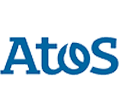Objectives
1.1 Foundation
Build a distributed High performance computing (HPC) infrastructure for Big data and HPC convergence. The aim will on build an advanced architecture for big data analytics and High performance computing (HPC) applications leveraging modern technologies from High performance computing (HPC), Big data and Cloud computing.
1.2 Innovation
Validation from three large scale pilots. The aim will on improving performances in term of computational time and data management. The aim will on demonstrate benefits by creating an ecosystem for industrial applications context.
1.3 Extension
LEXIS infrastructure, platform ad services will be extended by Open call for external stakeholders mainly from existing pilots test-beds in E-science and industrial sectors: Aeronautics, Weather and Climate, and Earthquake and Tsunami.
LEXIS test-bed-specific objectives
2.1 Aeronautics
The Aeronautics Large-scale Pilot lead by Avio Aero company in LEXIS is aimed to boost and promote a step change in the numerical investigations of complex fluid-dynamic behaviour of critical aeronautical engines’ components, allowing to improve their engineering design quality so as to optimize engine performance (specific fuel consumption and emissions) and to make lighter and greener aircraft.
Framed in this challenging context, the industrial applicability of LEXIS platform will be investigated both to reduce the running time of CPU-intensive and time-consuming engineering jobs and to enhance data handling and post-processing operations of the large dataset collected as jobs’ results.
2.2 Weather and climate
Within the context of Copernicus Services, the Weather & Climate pilot will increase the timeliness and quality of prediction and analyses. Simplify the access to such services from the cloud, in order to expand the downstream markets: emergency management, sustainable food and energy production or air quality.
2.3 Earthquake and tsunami
Earthquake and tsunami. Provide near real-time earthquake and tsunami damage/loss assessments and estimate of the tsunami inundation through simulations based on earthquake parameters, ensuring the delivery of expected consequences in time for fast response planning by emergency dispatchers.
LEXIS technology-specific objectives
3.1 Providing a ready-to-be-used High performance computing (HPC) infrastructure that offers High performance computing (HPC)-as-a-Service capabilities without incurring in performance/ efficiency slowdowns.
3.2 Implement a heterogeneous data storage management system providing simplified access to huge amounts of data.
3.3 Speed up CPU intensive and data/memory intensive algorithms also to support real time decision making.
3.4 Optimize data management operations and analytics algorithms that exploit the underlying infrastructures at their best to eventually extract outputs from data that help stakeholders improve their businesses.
3.5 Provide simple and secure HPDA service provisioning, through cloud technologies, for the pilot test-beds, accessible also for other users.
3.6 Guarantee interoperability with external data sources and seamless integration with external systems.




















